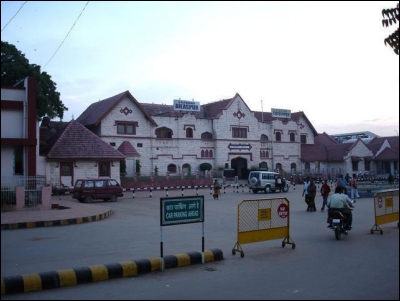Sindhudurg Fort represents a remarkable testament to the naval prowess and strategic genius of Chhatrapati Shivaji Maharaj. Constructed in 1664 on a rocky island near Malvan, this maritime fortress emerged as a critical defensive structure designed to counter growing foreign influences along the Konkan coast.
The fort's architectural marvel lies in its intricate design and robust construction. Involving over 100 architects and 3,000 workers, the project took three years to complete, utilizing massive rocks, iron mounds, and innovative engineering techniques. Its irregular shape, featuring 32 towers and walls reaching ten metres high, created an almost impregnable stronghold that symbolized Maratha naval dominance.
Strategic importance defined every aspect of Sindhudurg's construction. The fort served not merely as a military installation but as a comprehensive naval headquarters controlling maritime trade routes. Its underwater passages and carefully designed entry points demonstrated sophisticated 17th-century military engineering, allowing secret movements and defensive capabilities that were revolutionary for its time.
Political transitions marked the fort's history, with ownership changing between the Peshwas and British colonial powers. The 1765 Treaty of Purandar and subsequent political negotiations highlighted its significant geopolitical value. Local rebellions and freedom fighter activities, particularly during the Quit India Movement, further cemented its place in India's struggle for independence.
Surrounding smaller forts like Padmagad, Sarjekot, and Rajkot complemented Sindhudurg's defensive network. These interconnected maritime fortifications created a comprehensive security system that protected Maratha territorial interests and maritime trade routes. The meticulous planning reflected Shivaji Maharaj's visionary approach to territorial defense and naval strategy.
Archaeological evidence and historical narratives consistently emphasize the fort's cultural significance. Beyond its military utility, Sindhudurg represented a symbol of Maratha engineering excellence and naval ambition. Local legends and historical accounts celebrate the fort as more than a mere structure, but as a living embodiment of regional pride and technological innovation.
In contemporary times, the Archaeological Survey of India has undertaken restoration efforts to preserve this historical treasure. Tourism has emerged as a significant avenue for sharing the fort's rich narrative, offering visitors a tangible connection to Maharashtra's maritime heritage. The site continues to inspire historical researchers and cultural enthusiasts, representing a crucial chapter in India's complex colonial and pre-colonial history.
Modern preservation efforts balance historical authenticity with accessibility. Visitors can explore the fort's intricate architecture, understand its strategic design, and appreciate the remarkable engineering achievements of the 17th century. Sindhudurg remains a powerful reminder of the Maratha Empire's sophisticated approach to maritime defense and territorial sovereignty.



